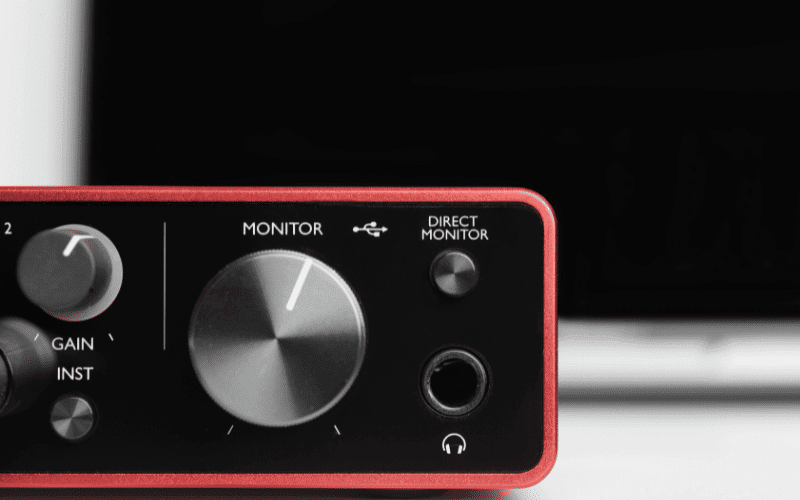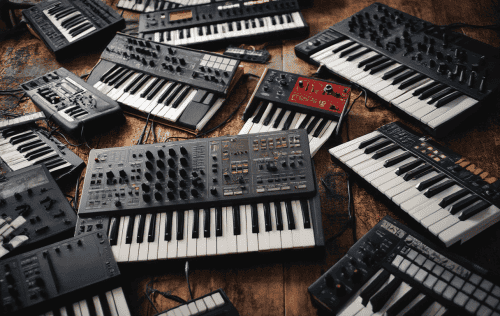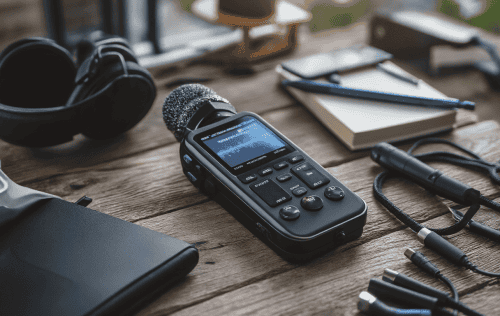Do subpar audio interfaces leave your music wanting more?
Don’t let poor sound quality and latency issues hold you back.
Transform your music production with the finest audio interfaces available.
Explore our recommendations for a seamless and professional audio experience.
Inhaltsverzeichnis
Best Audio Interfaces
- Pro performance with the finest pre-amps - Achieve a...
- Get the perfect guitar take - Thereâ€s no need to...
- Studio quality recordings for your music and podcasts -...
- Low-noise for crystal clear listening - Two low-noise...
- The artist's interface: Connect your mic to Scarlett's...
- Studio-quality sound: With a huge 120dB dynamic range,...
- Never lose a great take: Auto Gain sets the perfect...
- Find your signature sound: Air mode lifts vocals and...
- The songwriter's interface: Plug in your mic and guitar...
- Studio-quality sound: With a huge 120dB dynamic range,...
- Find your signature sound: Air mode lifts vocals and...
- Everything you need: Includes Pro Tools Intro+ for...
- The UMC22 offers an ultra-compact design with...
- Totally compatible with popular recording software like...
- Provides direct monitoring, XLR/TRS inputs, and an...
- Equipped with Midas-designed mic preamps, known for...
- Podcast, Record, Live Stream, This Portable Audio...
- Be ready for anything with this versatile M-AUDIO...
- Everything you Demand from an Audio Interface for...
- Get the best out of your Microphones - M-Track Duo’s...
Checklist: What makes great Audio Interfaces
- Connectivity: Look for audio interfaces that offer versatile connection options like USB, Thunderbolt, or FireWire. This ensures compatibility with a wide range of computers and devices, essential for any music production setup.
- Input/Output Options: Consider the number of inputs and outputs available. More I/O options provide greater flexibility, whether you’re recording a solo instrument or a full band, making your music production more dynamic. This is especially important when using a variety of musical instruments to create diverse soundscapes.
- Sound Quality: Ensure the audio interface supports high-resolution audio formats and has quality converters. This results in crystal-clear sound, enabling you to create professional-grade music tracks. Whether you’re recording intricate melodies or rich harmonies, high sound quality is a must.
- Latency: Low latency is critical for monitoring performances in real-time. Ensure the interface reduces lag to a minimum, allowing seamless music production and a smoother recording experience. Even when introducing kids musical instruments into recordings, minimal lag enhances the overall workflow.
- Portability: If you’re a mobile musician, consider the size and weight of the audio interface. Compact and lightweight designs are ideal for transporting your music studio wherever you go. Being able to move easily while still making high-quality recordings can truly elevate your music creation process.
FAQ
Why is connectivity important in audio interfaces?
Connectivity is crucial for compatibility with various computers and devices, ensuring that your audio interface integrates smoothly into any music production setup.
How do input/output options affect music production?
The number of inputs and outputs determines the flexibility of your setup, allowing for dynamic recording scenarios from solo instruments to full bands.
Why should latency be a consideration when choosing an audio interface?
Low latency is essential for real-time performance monitoring, enabling efficient music production and a smooth recording experience.










